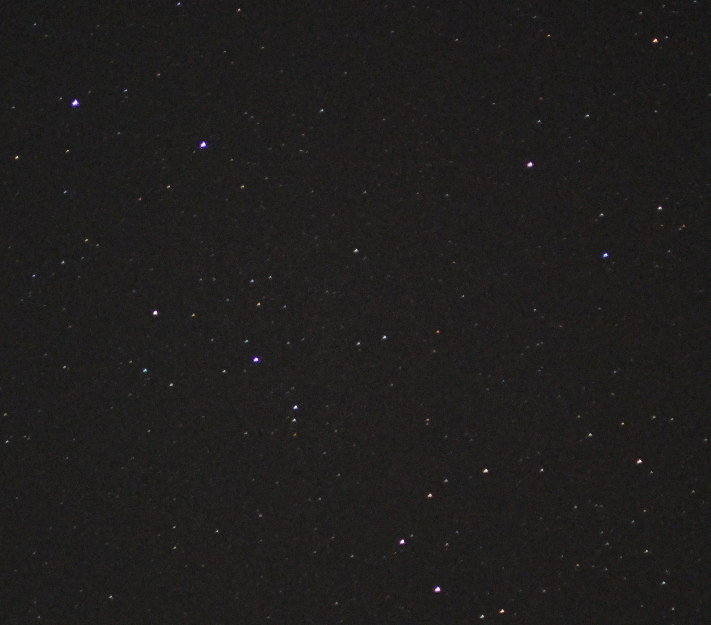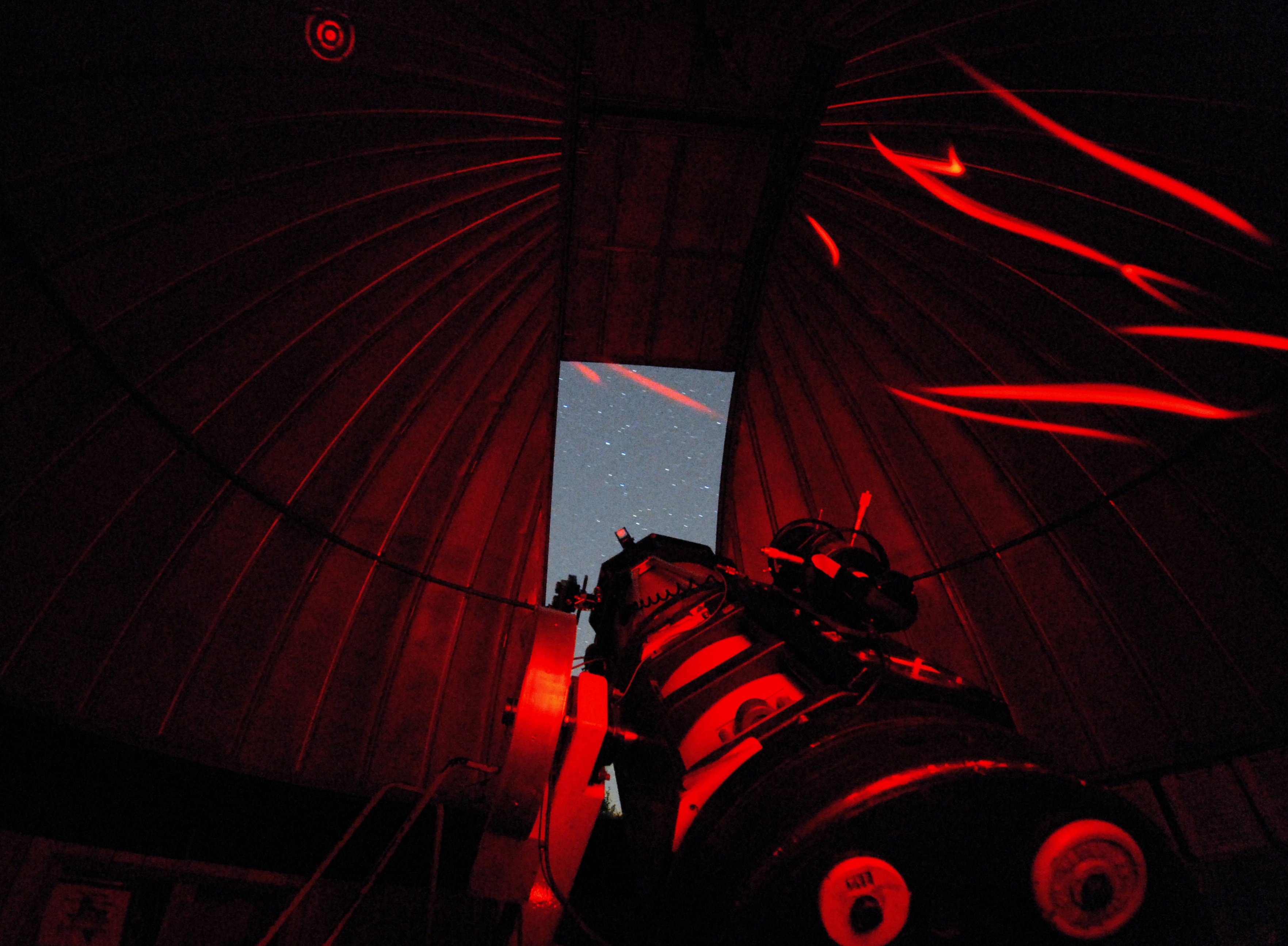|
|
Can you spot the asteroid in the star photo below?
Asteroid means "star like". Asteroids are so small that they look just like stars in a telescope. They give themselves away as not being stars because
they appear to move against the background stars, just like planets move. The photo above shows the Eastern half of the constellation
of Capricornus on two different days about a week apart. Viewed one image at a time, the asteroid Vesta looks just like a
star. By blinking two images taken a week apart you can see that it moved. The stars "move" a little too, because
it's really hard to perfectly align two photos, but you can see that the stars move together. The pattern of stars stays the
same. Some dim stars are visible in one photo but not the other. Conditions are never exactly the same: the air was clearer
the first night.
Another way to tell that Vesta is not a star is to compare the stars in the photo with a star chart, and spot the interloper. To help you get started, the bright star nearest to the top left corner of the photo is Deneb Algedi ("tail of the goat", called δ Capricorni by astronomers). If you are standing in the Northern hemisphere looking at Capricornus in the South, the part of the constellation in the
photo is the "left half". On astronomical charts with North at the top, East is to the left and West is to the right!
That's the reverse of familiar maps. That's because in familiar maps you're looking down; for star charts, you're looking
up. So East and West go the other way.
The asteroid Vesta is the brightest asteroid normally visible. It is easily visible in binoculars, and is bright enough some people can even
just see it with only their eyes. Vesta was in the news in 2011 because NASA put a space probe in orbit around it. It's now moved on to another asteroid, Ceres.
Here is a photo of a telescope at Brazos Bend State park imaging the asteroid "Pratchett". Can you identify what constellation is visible through the dome slit? Note the stars here are streaked because we
used a stationary camera, fixed to the Earth... which is rotating! The images of Vesta at the top of the page were taken with
a camera fixed to the telescope, which turns to track the stars... keeping a fixed orientation in space as the Earth turns
underneath it. The red streaks were made by people moving around during the
exposure using very dim red flashlights to see their way in the dark. The red "bullseye" on the dome ceiling is
from the Telrad finder scope used to point the telescope. It projects a red bullseye onto the sky when you look through it,
and that's part of how the astronomers using the telescope get it pointed at just the right spot in the sky. But it also projects
a very dim red bullseye onto the inside of the telescope dome!
|

